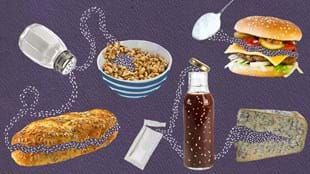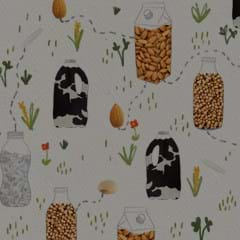We worry sometimes about additives in our food – preservatives, coloring, artificial flavors, MSG. But possibly the most harmful additive in many common foods is one we don’t think about very often: salt.
Salt, or technically sodium chloride, is probably the most common food additive in processed foods, and is also probably the most harmful if overconsumed. We do need some salt – it’s essential for a range of bodily processes – but the daily dose is a lot less than most of us probably consume. Around the world the recommended daily sodium level is no more than 2300mg – about a teaspoon.
Too much salt has long been linked with high blood pressure and heart disease. That’s because salt makes the body retain water; the more we eat, the more water we store. That raises blood pressure.
High blood pressure puts strain on the heart, arteries, kidneys and brain, which can cause heart attacks, strokes, dementia and kidney disease. There’s also evidence too much salt contributes to stomach cancer and osteoporosis.
We get much of our daily salt intake not, as we might imagine, from the salt we sprinkle on our food. It comes instead from processed foods – and not always foods we’d expect.
Here are some surprising sources of salt/sodium:
Bread
Bread can contribute a significant amount of salt to our day. Salt is used for its preservative qualities in bread. It also helps with texture and, of course, flavor; one of salt’s known qualities is its ability to enhance other flavors. (Just ask a traditional porridge eater how they’d feel about their morning porridge without salt!). Salt also helps bread develop a golden, crisp crust. But salt in bread on supermarket shelves can vary widely, so comparing labels can be very useful.
Cereal
Most cereals don’t taste salty, but it’s surprising how high some can be when it comes to sodium. Salt is used to make those breakfast flakes golden and crunchy, as well as to preserve the cereal and keep it fresher for longer. Comparing between brands of the same cereal – different brands of cornflakes, for example – can be revealing, though. Look for a lower sodium number.
Meat substitutes
More of us are opting for vegetarian or vegan lifestyles. Some of the things we may use to replace meat – tofu for example – are naturally low in salt. But other more novel options, such as vegetarian sausages or burgers, can be surprisingly high. Salt is used in these products for its binding effect – it helps ingredients stay together in sausages, for example – and for flavor. Keep an eye especially on the newer meat-like meat substitutes; these look a lot like chicken or beef thanks to clever technology, but they can also pack a wallop when it comes to salt.
Sauces
It makes sense that salty sauces like soy or fish sauce are high in salt – they taste super salty. But others, such as ketchup, sweet chilli, barbecue and even mustard sauces can add a lot of salt to your day, and even though we don’t add salt to our food we can blow out our daily allowance without realizing it. Keep an eye, too, on supermarket salad dressings, which can be very salty without necessarily tasting that way.
Cheese
Depending on how much we eat, cheese can be a major contributor to our daily salt intake. Salt is an important ingredient in cheese making; it’s used to help cheese develop flavor – think of a strong blue such as Stilton – as well as body and texture. Salt also plays a role in fermentation. In general, fresh cheeses such as ricotta and cottage cheese have very little salt, and stronger cheeses such as aged cheddar and blue cheeses have more. And some cheeses such as feta and haloumi are stored in brine, making them even saltier.
HOW MUCH IS TOO MUCH?
A food doesn’t have to taste salty to be high in salt, so it really pays to check labels. You’re looking for the listing for sodium in the nutrition information panel, and a lower number is always better. If a food has 120mg or less per 100g, it’s considered low sodium. More than 600mg is considered high.

Niki Bezzant is a New Zealand-based food writer, editor and commentator. She is the founding editor (now editor-at-large) of Healthy Food Guide magazine, and is currently president of Food Writers New Zealand and a proud ambassador for the Garden to Table program which helps children learn how to grow, cook and share food. She is a member of the Council of Directors for the True Health Initiative, a global coalition of health professionals dedicated to sharing a science-based message of what we know for sure about lifestyle and health.
Illustration by Anieszka Banks.
If you want more tried, tested and true news from the leading edge of health and fitness sign up to get Fit Planet insights and advice straight to your inbox.








